What are the stages of a tropical cyclone?
Tropical Cyclone lifecycles
These massive, menacing systems are known for their size and shear force - at times hurricane-force winds can be measured up to one hundred and 50 miles away from its eye. But, hurricanes don't start out big and bad. FOX 5 Storm Team Meteorologist Jonathan Stacey can take you through its lifecycle.
The word "hurricane" comes from the Native American word "hurucane," which means "evil spirit of the wind."
These massive, menacing systems are known for their size and shear force. At times hurricane-force winds can be measured up to 150 miles away from its eye.
But, hurricanes don't start out big and bad. FOX 5 Storm Team Meteorologist Jonathan Stacey can take you through their lifecycle. Watch the video to join the conversation.
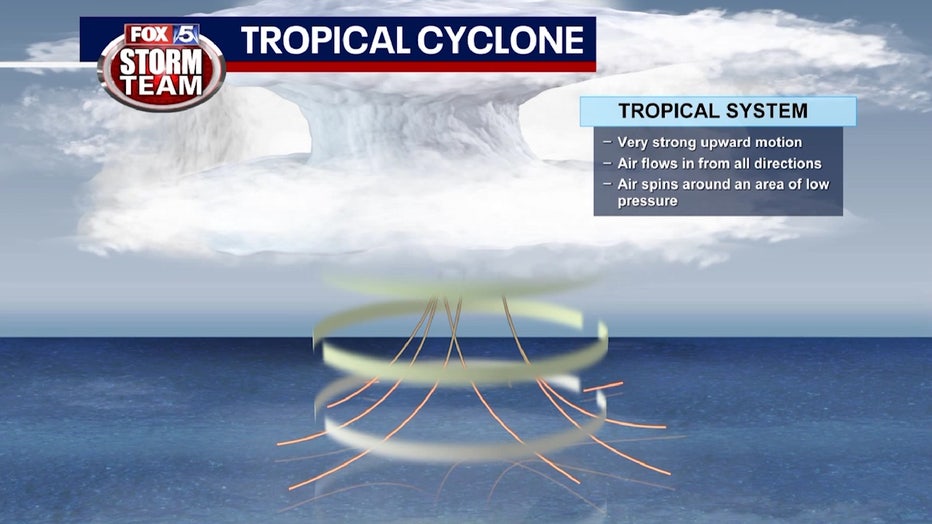
Tropical system
A tropical cyclone is a generic term used by meteorologists to describe a rotating, organized system of clouds and thunderstorms that originates over tropical or subtropical waters and has closed, low-level circulation.
A tropical cyclone is called a more specific term as its maximum sustained winds change speeds.

Tropical depression
For example, the weakest tropical cyclones are called tropical depressions. Depressions aren't assigned names by the National Hurricane Center.
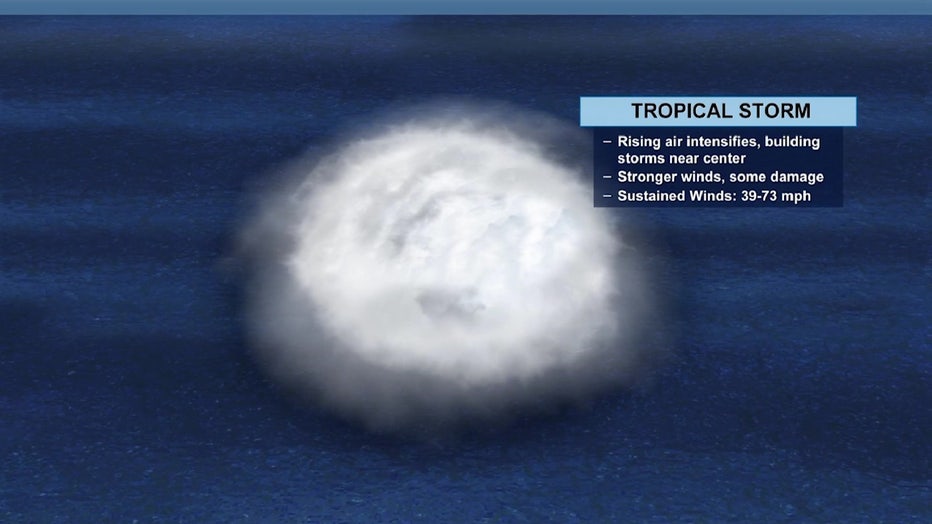
Tropical storm
If a depression intensifies such that its maximum sustained winds reach 39 miles per hour, the tropical cyclone becomes a tropical storm.
That's when the National Hurricane Center officially gives it a name.
HOW DO HURRICANES GET THEIR NAMES?
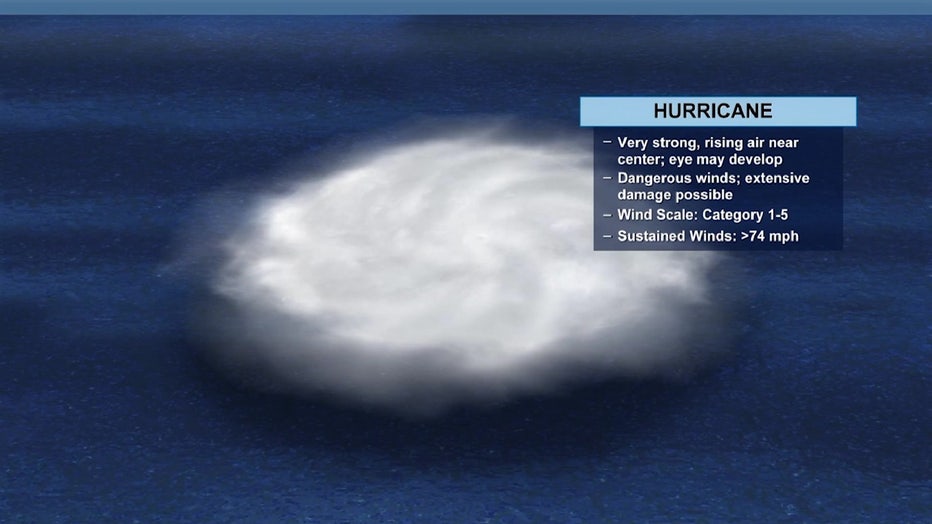
hurricane
Once a tropical cyclone reaches maximum sustained winds of 74 miles per hour or higher, it is then classified as a hurricane.

Major hurricane
If a tropical cyclone's max sustained winds reach or surpass 111 miles per hour, it's then classified as a major hurricane. This is typically the most destructive and most deadly type of storm.
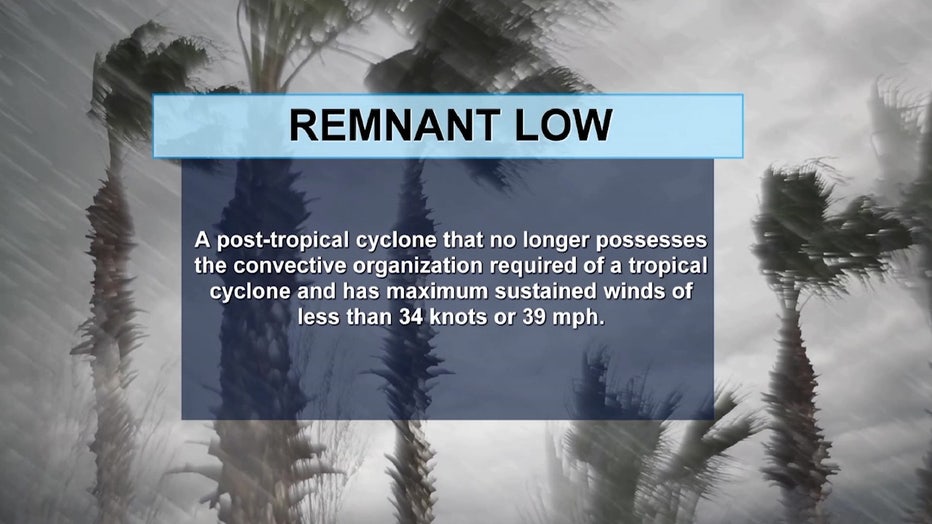
Remnant low
Once a tropical cyclone weakens based on its geographic location and/or decreased maximum sustained winds, it's then known as a post-tropical cyclone and is oftentimes called a remnant low.
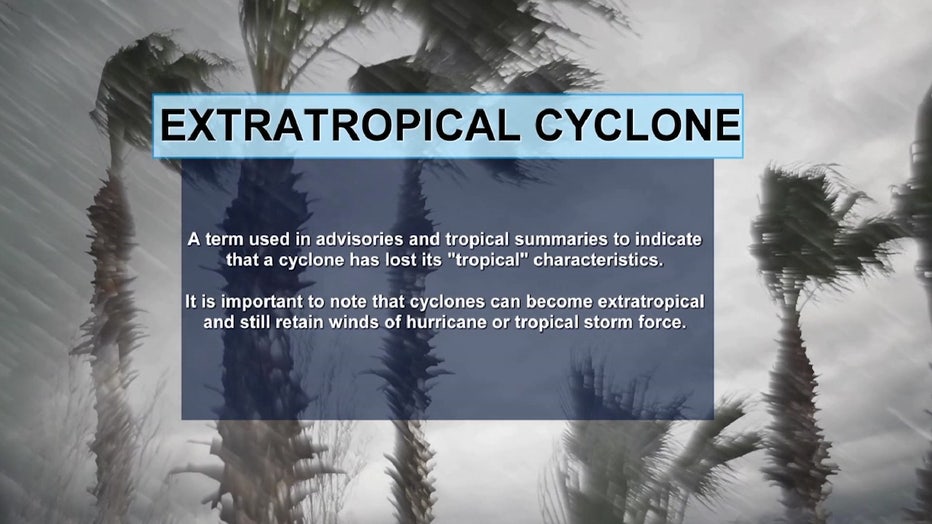
Extratropical cyclone
However, if the former tropical cyclone is influenced by, or even joins forces with another non-tropical weather system, it's oftentimes referred to as an extratropical cyclone.
The ingredients for tropical cyclones include a pre-existing weather disturbance, warm tropical oceans, moisture, and relatively light winds.
When a weather system does not meet all of these conditions but is forecast to bring tropical storm or hurricane force winds to land in the next day or two, it is called a potential tropical cyclone.
New terms
- Tropical cyclone
- Tropical depression
- Tropical storm
- Hurricane
- Major hurricane
- Post-tropical cyclone/Remnant low
- Extratropical cyclone
For more educational lessons on the weather around you, download the FREE FOX 5 Storm Team app and following @FOX5StormTeam on Twitter.

